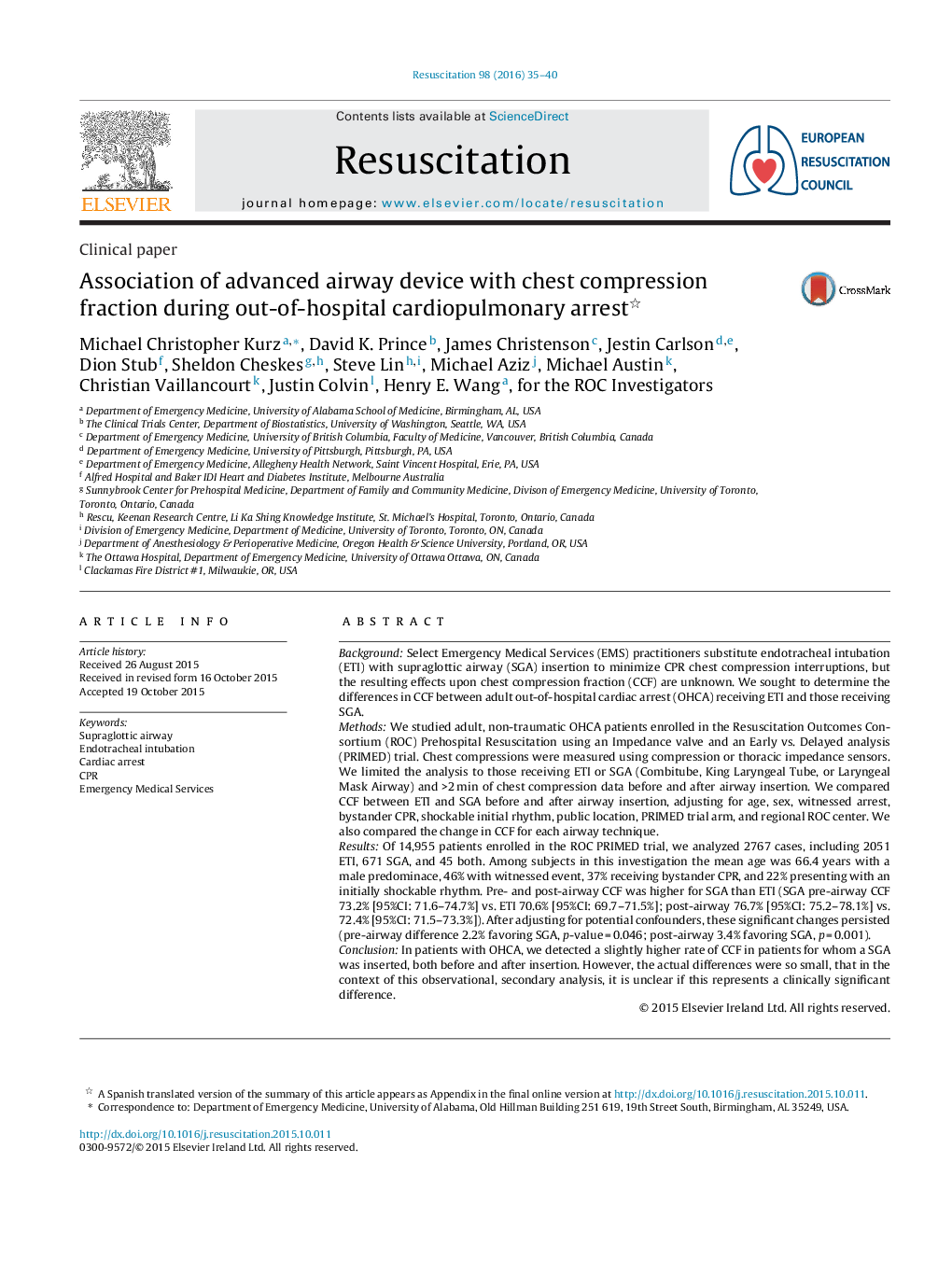| کد مقاله | کد نشریه | سال انتشار | مقاله انگلیسی | نسخه تمام متن |
|---|---|---|---|---|
| 5997386 | 1578986 | 2016 | 6 صفحه PDF | دانلود رایگان |
BackgroundSelect Emergency Medical Services (EMS) practitioners substitute endotracheal intubation (ETI) with supraglottic airway (SGA) insertion to minimize CPR chest compression interruptions, but the resulting effects upon chest compression fraction (CCF) are unknown. We sought to determine the differences in CCF between adult out-of-hospital cardiac arrest (OHCA) receiving ETI and those receiving SGA.MethodsWe studied adult, non-traumatic OHCA patients enrolled in the Resuscitation Outcomes Consortium (ROC) Prehospital Resuscitation using an Impedance valve and an Early vs. Delayed analysis (PRIMED) trial. Chest compressions were measured using compression or thoracic impedance sensors. We limited the analysis to those receiving ETI or SGA (Combitube, King Laryngeal Tube, or Laryngeal Mask Airway) and >2 min of chest compression data before and after airway insertion. We compared CCF between ETI and SGA before and after airway insertion, adjusting for age, sex, witnessed arrest, bystander CPR, shockable initial rhythm, public location, PRIMED trial arm, and regional ROC center. We also compared the change in CCF for each airway technique.ResultsOf 14,955 patients enrolled in the ROC PRIMED trial, we analyzed 2767 cases, including 2051 ETI, 671 SGA, and 45 both. Among subjects in this investigation the mean age was 66.4 years with a male predominace, 46% with witnessed event, 37% receiving bystander CPR, and 22% presenting with an initially shockable rhythm. Pre- and post-airway CCF was higher for SGA than ETI (SGA pre-airway CCF 73.2% [95%CI: 71.6–74.7%] vs. ETI 70.6% [95%CI: 69.7–71.5%]; post-airway 76.7% [95%CI: 75.2–78.1%] vs. 72.4% [95%CI: 71.5–73.3%]). After adjusting for potential confounders, these significant changes persisted (pre-airway difference 2.2% favoring SGA, p-value = 0.046; post-airway 3.4% favoring SGA, p = 0.001).ConclusionIn patients with OHCA, we detected a slightly higher rate of CCF in patients for whom a SGA was inserted, both before and after insertion. However, the actual differences were so small, that in the context of this observational, secondary analysis, it is unclear if this represents a clinically significant difference.
Journal: Resuscitation - Volume 98, January 2016, Pages 35–40
